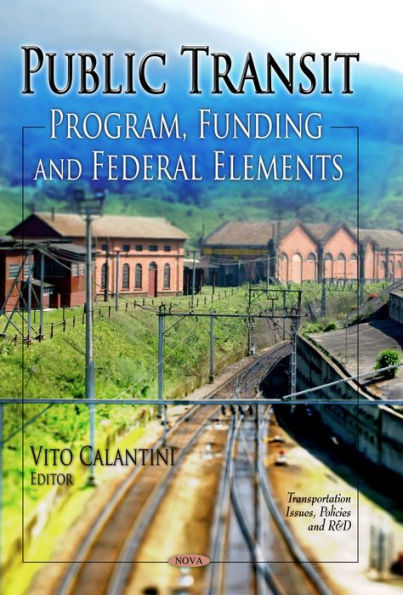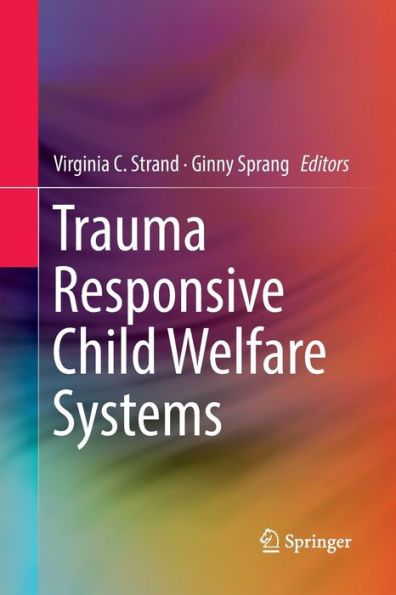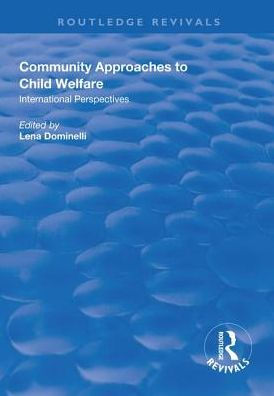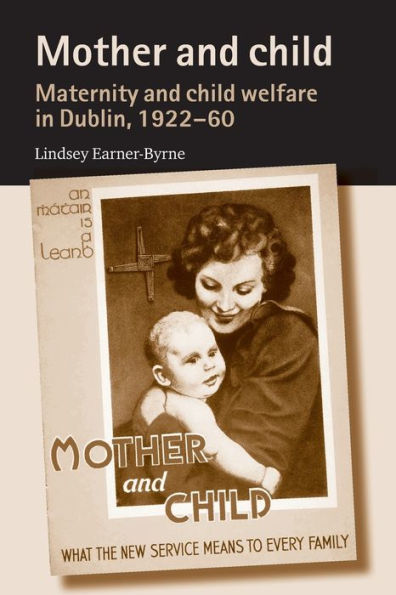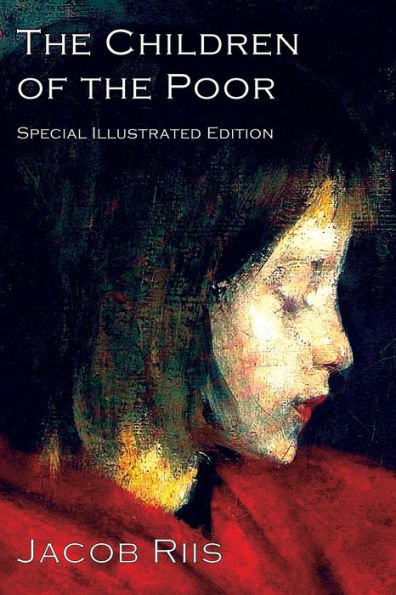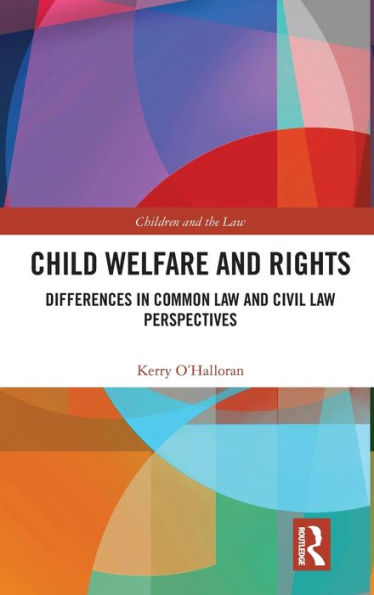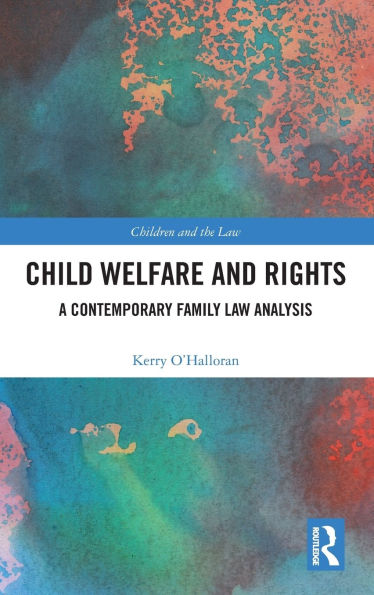Home
Child Welfare: An Overview of Federal Programs and Their Current Funding
Barnes and Noble
Loading Inventory...
Child Welfare: An Overview of Federal Programs and Their Current Funding
Current price: $19.95
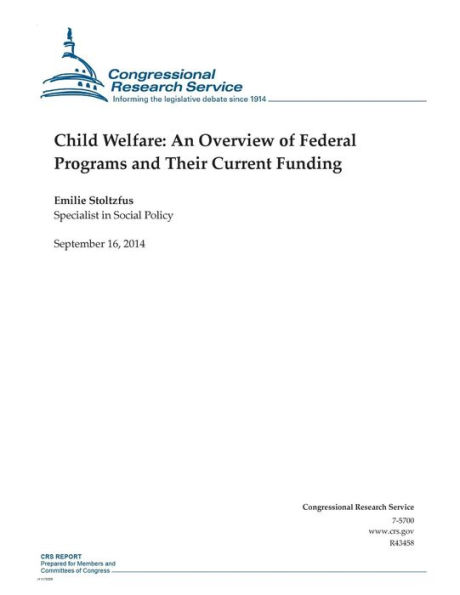
Barnes and Noble
Child Welfare: An Overview of Federal Programs and Their Current Funding
Current price: $19.95
Loading Inventory...
Size: OS
*Product information may vary - to confirm product availability, pricing, shipping and return information please contact Barnes and Noble
Child welfare services are intended to prevent the abuse or neglect of children; ensure that children have safe, permanent homes; and promote the well-being of children and their families. As the U.S. Constitution has been interpreted, states bear the primary responsibility for ensuring the welfare of children and their families. In recent years, Congress has appropriated just above or below $8 billion in federal support dedicated to child welfare purposes. Most of those dollars (97%-98%) were provided to state, tribal, or territorial child welfare agencies (via formula grants or as federal reimbursement for a part of all eligible program costs). Federal involvement in state administration of child welfare activities is primarily tied to this financial assistance. The remaining federal dollars dedicated to child welfare purposes are provided, primarily on a competitive basis, to a variety of eligible entities to support research, evaluation, technical assistance, and demonstration projects to expand knowledge and improve child welfare practice and policy. At the federal level, child welfare programs are primarily administered by the Children's Bureau, which is an agency within the Administration for Children and Families (ACF) at the U.S. Department of Health and Human Services (HHS). However, three competitive grant programs (authorized by the Victims of Child Abuse Act) are administered by the Office of Justice Programs (OJP) within the Department of Justice (DOJ).Final FY2014 child welfare funding was appropriated as part of the Consolidated Appropriations Act, 2014 (P.L. 113-76). Because that act maintained discretionary funding at the statutory limit provided for in the recent Bipartisan Budget Agreement of 2013 (P.L. 113-67), FY2014 funding for child welfare programs that receive discretionary funding was not affected by sequestration. While most federal child welfare programs receive discretionary funding, the largest amount of federal funding is provided to child welfare programs through mandatory funding authorized under Title IV-E of the Social Security Act. Nearly all of that funding (related to foster care, adoption assistance, kinship guardianship assistance, and services to youth aging out of foster care) is statutorily exempted from sequestration in every year. Finally, a few child welfare programs receive mandatory funding and may be subject to sequestration; principally this includes the mandatory funding provided for the Promoting Safe and Stable Families Program. For FY2014, the final funding level for these nonexempt mandatory child welfare programs was reduced from their otherwise appropriated level by 7.2%.Child welfare support is provided via multiple federal programs. Title IV-B of the Social Security Act authorizes funding to states, territories, and tribes for a broad range of child welfare-related services to children and their families. Title IV-E of the Social Security Act entitles states to federal reimbursement for a part of the cost of providing foster care, adoption assistance, and (in states electing to provide this kind of support) kinship guardianship assistance on behalf of each child who meets federal eligibility criteria. Title IV-E also authorizes capped entitlement funding to states (and some discretionary funds as well) for provision of services to youth who "age out" of foster care, or are expected to age out without placement in a permanent family. Legislation concerning programs authorized in Title IV-B and Title IV-E, which represents the very large majority of federal child welfare dollars, is handled in Congress by the House Committee on Ways and Means and the Senate Finance Committee.
Child welfare services are intended to prevent the abuse or neglect of children; ensure that children have safe, permanent homes; and promote the well-being of children and their families. As the U.S. Constitution has been interpreted, states bear the primary responsibility for ensuring the welfare of children and their families. In recent years, Congress has appropriated just above or below $8 billion in federal support dedicated to child welfare purposes. Most of those dollars (97%-98%) were provided to state, tribal, or territorial child welfare agencies (via formula grants or as federal reimbursement for a part of all eligible program costs). Federal involvement in state administration of child welfare activities is primarily tied to this financial assistance. The remaining federal dollars dedicated to child welfare purposes are provided, primarily on a competitive basis, to a variety of eligible entities to support research, evaluation, technical assistance, and demonstration projects to expand knowledge and improve child welfare practice and policy. At the federal level, child welfare programs are primarily administered by the Children's Bureau, which is an agency within the Administration for Children and Families (ACF) at the U.S. Department of Health and Human Services (HHS). However, three competitive grant programs (authorized by the Victims of Child Abuse Act) are administered by the Office of Justice Programs (OJP) within the Department of Justice (DOJ).Final FY2014 child welfare funding was appropriated as part of the Consolidated Appropriations Act, 2014 (P.L. 113-76). Because that act maintained discretionary funding at the statutory limit provided for in the recent Bipartisan Budget Agreement of 2013 (P.L. 113-67), FY2014 funding for child welfare programs that receive discretionary funding was not affected by sequestration. While most federal child welfare programs receive discretionary funding, the largest amount of federal funding is provided to child welfare programs through mandatory funding authorized under Title IV-E of the Social Security Act. Nearly all of that funding (related to foster care, adoption assistance, kinship guardianship assistance, and services to youth aging out of foster care) is statutorily exempted from sequestration in every year. Finally, a few child welfare programs receive mandatory funding and may be subject to sequestration; principally this includes the mandatory funding provided for the Promoting Safe and Stable Families Program. For FY2014, the final funding level for these nonexempt mandatory child welfare programs was reduced from their otherwise appropriated level by 7.2%.Child welfare support is provided via multiple federal programs. Title IV-B of the Social Security Act authorizes funding to states, territories, and tribes for a broad range of child welfare-related services to children and their families. Title IV-E of the Social Security Act entitles states to federal reimbursement for a part of the cost of providing foster care, adoption assistance, and (in states electing to provide this kind of support) kinship guardianship assistance on behalf of each child who meets federal eligibility criteria. Title IV-E also authorizes capped entitlement funding to states (and some discretionary funds as well) for provision of services to youth who "age out" of foster care, or are expected to age out without placement in a permanent family. Legislation concerning programs authorized in Title IV-B and Title IV-E, which represents the very large majority of federal child welfare dollars, is handled in Congress by the House Committee on Ways and Means and the Senate Finance Committee.

